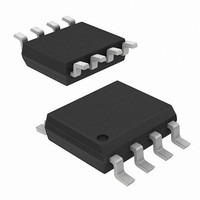SP485EMN-L Exar Corporation, SP485EMN-L Datasheet - Page 9

SP485EMN-L
Manufacturer Part Number
SP485EMN-L
Description
IC TXRX RS485 HALF DUPLEX 8NSOIC
Manufacturer
Exar Corporation
Type
Transceiverr
Datasheet
1.SP485ECP-L.pdf
(12 pages)
Specifications of SP485EMN-L
Package / Case
8-SOIC (0.154", 3.90mm Width)
Number Of Drivers/receivers
1/1
Protocol
RS485
Voltage - Supply
5V
Mounting Type
Surface Mount
Operating Supply Voltage
5 V
Supply Current
600 uA
Lead Free Status / RoHS Status
Lead free / RoHS Compliant
Lead Free Status / RoHS Status
Lead free / RoHS Compliant, Lead free / RoHS Compliant
Other names
1016-1173-5
Available stocks
Company
Part Number
Manufacturer
Quantity
Price
Company:
Part Number:
SP485EMN-L
Manufacturer:
SIPEX
Quantity:
1 107
Part Number:
SP485EMN-L
Manufacturer:
SIPEX
Quantity:
20 000
Part Number:
SP485EMN-L/TR
Manufacturer:
SIPEX
Quantity:
20 000
With the Air Discharge Method, an ESD
voltage is applied to the equipment under
test (EUT) through air. This simulates an
electrically charged person ready to connect
a cable onto the rear of the system only to
find an unpleasant zap just before the person
touches the back panel. The high energy
potential on the person discharges through
an arcing path to the rear panel of the system
before he or she even touches the system.
This energy, whether discharged directly or
through air, is predominantly a function of the
discharge current rather than the discharge
voltage. Variables with an air discharge such
as approach speed of the object carrying the
ESD potential to the system and humidity
will tend to change the discharge current.
For example, the rise time of the discharge
current varies with the approach speed.
The Contact Discharge Method applies the
ESD current directly to the EUT. This method
was devised to reduce the unpredictability
of the ESD arc. The discharge current rise
time is constant since the energy is directly
transferred without the air-gap arc. In situ-
ations such as hand held systems, the ESD
charge can be directly discharged to the
equipment from a person already holding
the equipment. The current is transferred
on to the keypad or the serial port of the
equipment directly and then travels through
the PCB and finally to the IC.
The circuit model in Figures 9 and 10 repre-
sent the typical ESD testing circuit used for
all three methods. The C
with the DC power supply when the first
switch (SW1) is on. Now that the capacitor
is charged, the second switch (SW2) is on
while SW1 switches off.
SP48E, SP485E
Driver Outputs
Receiver Inputs
FAMILY
Exar Corporation 48720 Kato Road, Fremont CA, 94538 • 50-668-707 • www.exar.com
HUMAN BODY
+/-5kV
+/-5kV
MODEL
S
is initially charged
Air Discharge Direct Contact
+/-5kV
+/-5kV
9
IEC000-4-2
Figure 11. ESD Test Waveform for IEC1000-4-2
The voltage stored in the capacitor is then
applied through R
resistor, onto the device under test (DUT).
In ESD tests, the SW2 switch is pulsed so
that the device under test receives a dura-
tion of voltage.
For the Human Body Model, the current
limiting resistor (R
(C
IEC-1000-4-2, the current limiting resistor
(R
an 150pF, respectively.
The higher C
the IEC1000-4-2 model are more stringent
than the Human Body Model. The larger
storage capacitor injects a higher voltage
to the test point when SW2 is switched on.
The lower current limiting resistor increases
the current charge onto the test point.
30A
15A
S
S
+/-8kV
+/-8kV
0A
) are 1.5kΩ an 100pF, respectively. For
) and the source capacitor (C
t = 0ns
Level
S
4
4
value and lower R
S
) and the source capacitor
S
t →
, the current limiting
SP48E,485E_02_08080
t = 30ns
S
) are 330Ω
S
value in













